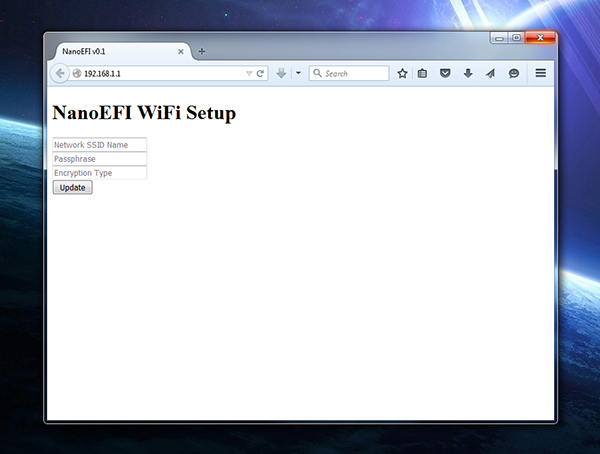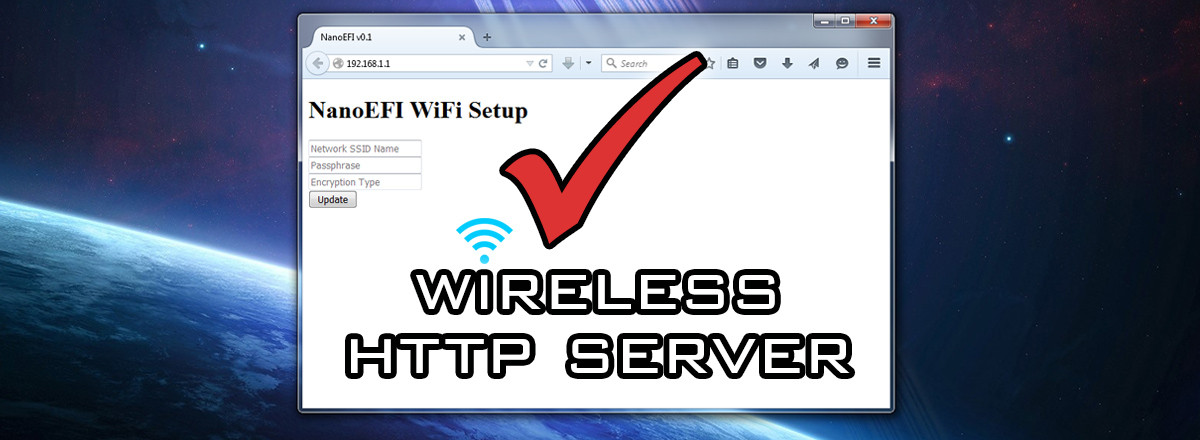In a break from the norm of using 3rd-party EFI tuning tools, we’re rolling our own tuning software using web-based technologies. Javascript for the heavy lifting, and of course HTML/CSS for our interface.
Internally hosted tuning web panel
So you can tune or live-view anywhere, on any device, even on trips out!
At first it was thought that the tuning tool suite should be hosted remotely on the nanoefi.com server, pulled through an iFrame or similar method. But after exploring the capabilities of the ESP8266 module, it was found we can reliably host the tuning tool suite directly from the NanoEFI unit itself, simplifying development and security concerns.
The best part? The ESP8266 supports SoftAP (Software Access Point) mode, meaning that it can act as a stand-alone POA without any external network to facilitate connection. In SoftAP mode, any device can securely connect directly to the nanoEFI system anywhere in range. Even miles away from the nearest network!
This transforms your vehicle into a mobile tuning hotspot, for making easy adjustments to the tune on the fly from any device in range.
![]()
Tune from desktops, laptops, or even your mobile phone!
Where does this stand?
In the last two weeks – of punching through the learning curve of the ESP8266 – progress has come a long way. This is what is currently finished:
You can see the NanoEFI SoftAP, and connect to it.

And load the basic wireless config panel in your browser
Type “192.168.1.1” into your browser and hit enter. You’ll be greeted with the basic configuration panel.

From here you can enter credentials for your home network with internet access, data that is stored in internal EEPROM and which will later be used for pulling software updates and other internet-based features.
The next step: Adding more memory
Since the Arduino Mini / ATmega328P is limited to 32KB available memory, there is isn’t enough space to host a modern webpage, dependencies, and image resources. Let alone still having enough space for the code for EFI functions.
Spansion S25FL1-K flash memory expansion
“Flash Memory 32Mb 3V 108Mhz Serial Flash”
This tiny SMD chip gives us 32 megabits of additional storage space. Which works out to 4 megabytes. Plenty of room for multiple HTML pages, CSS stylesheets, and a nice framework like jQuery Mobile. And there is enough room left over to store handy libraries like Highcharts for really useful graphs to view operation data, even in real time.

After having soldered the expansion to this adapter, I’m ready to add it to the breadboard and start integrating it into the system. Be back soon!


Amazing project and fabulous idea. This is going to be a huge game changer in the motor sports world. People have great ideas all the time in all aspects of kart design and building. But it’s not every day something like this comes along that will change the sport forever. No more stupid carb issues on inclines, jetting, etc… and CPU controlled fuel to air ratios. For 1 person to have created this on their own is amazing. If it works like it’s intended to… you should seriously look into crowd funding this project or other means of automating the manufacturing process. I’m sure you have patent applications ready to go as well. Hopefully, you will offer these at a fair price to consumers… goodluck!⁶